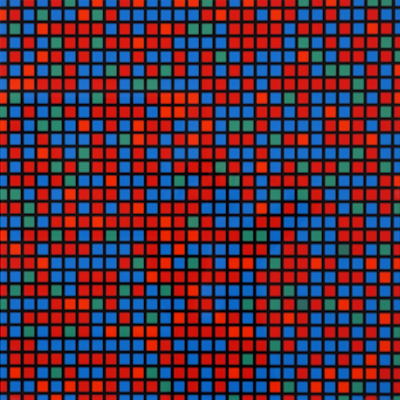


Details
Artist
Styles
Set of 4 lithographs with collage on Arches paper // Untitled (Burgundy, Black, Yellow) by César Paternosto is a 2020 lithograph that utilizes a minimalist, geometric design to explore depth and spatial balance. This piece is part of a limited series of lithographs with collaged elements on Arches paper, featuring raised rectangular forms in burgundy, black, and yellow. The cut-out sections and overlapping layers cast subtle shadows, enhancing the dimensionality and creating a dialogue between color and space. Paternosto's careful arrangement of these elements invites the viewer to reflect on the relationship between negative space and form, capturing a tranquil yet thought-provoking aesthetic. Each of the 20 pieces in this edition embodies Paternosto’s dedication to abstraction, drawing inspiration from Constructivist ideals while delivering a contemporary approach to shape and shadow.
Untitled (burgundy, black, yellow), 2020
form
Medium
Size
60 x 60 cm
- Inches
- Centimeters
Edition
Price
- USD
- EUR
- GBP
Details
Artist
Styles
Set of 4 lithographs with collage on Arches paper // Untitled (Burgundy, Black, Yellow) by César Paternosto is a 2020 lithograph that utilizes a minimalist, geometric design to explore depth and spatial balance. This piece is part of a limited series of lithographs with collaged elements on Arches paper, featuring raised rectangular forms in burgundy, black, and yellow. The cut-out sections and overlapping layers cast subtle shadows, enhancing the dimensionality and creating a dialogue between color and space. Paternosto's careful arrangement of these elements invites the viewer to reflect on the relationship between negative space and form, capturing a tranquil yet thought-provoking aesthetic. Each of the 20 pieces in this edition embodies Paternosto’s dedication to abstraction, drawing inspiration from Constructivist ideals while delivering a contemporary approach to shape and shadow.
- Recently Added
- Price (low-high )
- Price (high-low )
- Year (low-high )
- Year (high-low )
César Paternosto
Untitled (burgundy, Black, Yellow), 2020
Limited Edition Print
Lithograph
EUR 2,000
What is geometric abstract art?
Geometric abstraction is a form of abstract art that uses geometric shapes arranged in a non-illusionistic space (though not always) and combined into non-representational (non-objective) compositions. Based on years of artistic research, some artists have proposed that geometric abstraction offers a solution to modern challenges by rejecting traditional illusionistic practices in favor of clarity and simplicity.

















